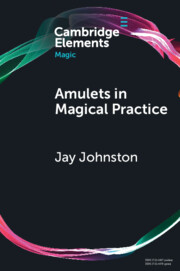Refine search
Actions for selected content:
48 results
Interlaced Strands of Change: Vernacular Pedagogies Weaving Indeterminism into Place-Based Education
-
- Journal:
- Australian Journal of Environmental Education , First View
- Published online by Cambridge University Press:
- 07 August 2025, pp. 1-14
-
- Article
-
- You have access
- Open access
- HTML
- Export citation
Chapter 15 - Comics Go to School
- from Part III - Emerging Media
-
-
- Book:
- Latinx Literature in Transition, 1992–2020
- Published online:
- 19 June 2025
- Print publication:
- 03 July 2025, pp 279-294
-
- Chapter
- Export citation
Chapter 2 - From Dialectology to Sociolinguistics: A Short History
-
- Book:
- English Sociolinguistics
- Published online:
- 01 May 2025
- Print publication:
- 15 May 2025, pp 20-51
-
- Chapter
- Export citation
African Studies Keyword: Science
-
- Journal:
- African Studies Review / Volume 67 / Issue 4 / December 2024
- Published online by Cambridge University Press:
- 25 November 2024, pp. 990-1010
-
- Article
-
- You have access
- Open access
- HTML
- Export citation
8 - Algeria’s Language Regime
- from Part II - Dependent Relationships
-
-
- Book:
- States of Language Policy
- Published online:
- 14 November 2024
- Print publication:
- 21 November 2024, pp 150-168
-
- Chapter
- Export citation
16 - Clare among the Poets
- from Part IV - Influences and Traditions
-
-
- Book:
- The Cambridge Companion to John Clare
- Published online:
- 14 November 2024
- Print publication:
- 21 November 2024, pp 241-256
-
- Chapter
- Export citation

Amulets in Magical Practice
-
- Published online:
- 28 March 2024
- Print publication:
- 25 April 2024
-
- Element
- Export citation
Climate, climate change and the global diversity of human houses
-
- Journal:
- Evolutionary Human Sciences / Volume 6 / 2024
- Published online by Cambridge University Press:
- 20 March 2024, e24
-
- Article
-
- You have access
- Open access
- HTML
- Export citation
How Elites Mobilize the Vernacular: A Case Study of Australian Prime Ministers' Use of ‘Fair Go’ Rhetoric
-
- Journal:
- Government and Opposition / Volume 60 / Issue 1 / January 2025
- Published online by Cambridge University Press:
- 19 February 2024, pp. 188-206
-
- Article
-
- You have access
- Open access
- HTML
- Export citation
II.34 - Historians of the Fourteenth Century
- from Fourteenth Century
-
- Book:
- The Cambridge Anthology of British Medieval Latin
- Published online:
- 11 January 2024
- Print publication:
- 01 February 2024, pp 309-317
-
- Chapter
- Export citation
Chapter 7 - Neo-Latin
-
-
- Book:
- The Cambridge Critical Guide to Latin Literature
- Published online:
- 04 January 2024
- Print publication:
- 18 January 2024, pp 334-394
-
- Chapter
- Export citation
Chapter 12 - Vernacular English in the Classroom
- from Part II - Methodologies
-
-
- Book:
- Decolonizing the English Literary Curriculum
- Published online:
- 02 November 2023
- Print publication:
- 09 November 2023, pp 236-255
-
- Chapter
-
- You have access
- Open access
- HTML
- Export citation
8 - When the Endogenous Becomes Exogenous
-
- Book:
- Shocking Contrasts
- Published online:
- 09 June 2023
- Print publication:
- 17 August 2023, pp 187-207
-
- Chapter
- Export citation
6 - Multilingualism and the Attitude toward French in the Latin Kingdom of Jerusalem
-
-
- Book:
- Multilingualism and History
- Published online:
- 20 April 2023
- Print publication:
- 27 April 2023, pp 123-137
-
- Chapter
- Export citation
1 - Those Dazzling African American Women Writers of the 1980s
- from Part I - The Expanding Canon
-
-
- Book:
- African American Literature in Transition, 1980–1990
- Published online:
- 02 February 2023
- Print publication:
- 09 February 2023, pp 17-35
-
- Chapter
- Export citation
Chapter 2 - Robert Hayden, the Black Arts Movement, and the Politics of Aesthetic Distance
- from I - Poetry and Music
-
-
- Book:
- African American Literature in Transition, 1960–1970
- Published online:
- 10 November 2022
- Print publication:
- 24 November 2022, pp 50-73
-
- Chapter
- Export citation
2 - Composing Customary Law as a Vernacular Law
- from Part I - Written Custom and the Formation of Vernacular Law
-
- Book:
- Vernacular Law
- Published online:
- 27 October 2022
- Print publication:
- 03 November 2022, pp 89-125
-
- Chapter
- Export citation
Introduction - Vernacular Writing and the Transformation of Customary Law in Medieval France
-
- Book:
- Vernacular Law
- Published online:
- 27 October 2022
- Print publication:
- 03 November 2022, pp 1-26
-
- Chapter
- Export citation
Chapter 6 - French
-
-
- Book:
- Literary Beginnings in the European Middle Ages
- Published online:
- 11 August 2022
- Print publication:
- 25 August 2022, pp 112-135
-
- Chapter
- Export citation
Chapter 2 - Scandinavia
-
-
- Book:
- Literary Beginnings in the European Middle Ages
- Published online:
- 11 August 2022
- Print publication:
- 25 August 2022, pp 23-44
-
- Chapter
- Export citation
